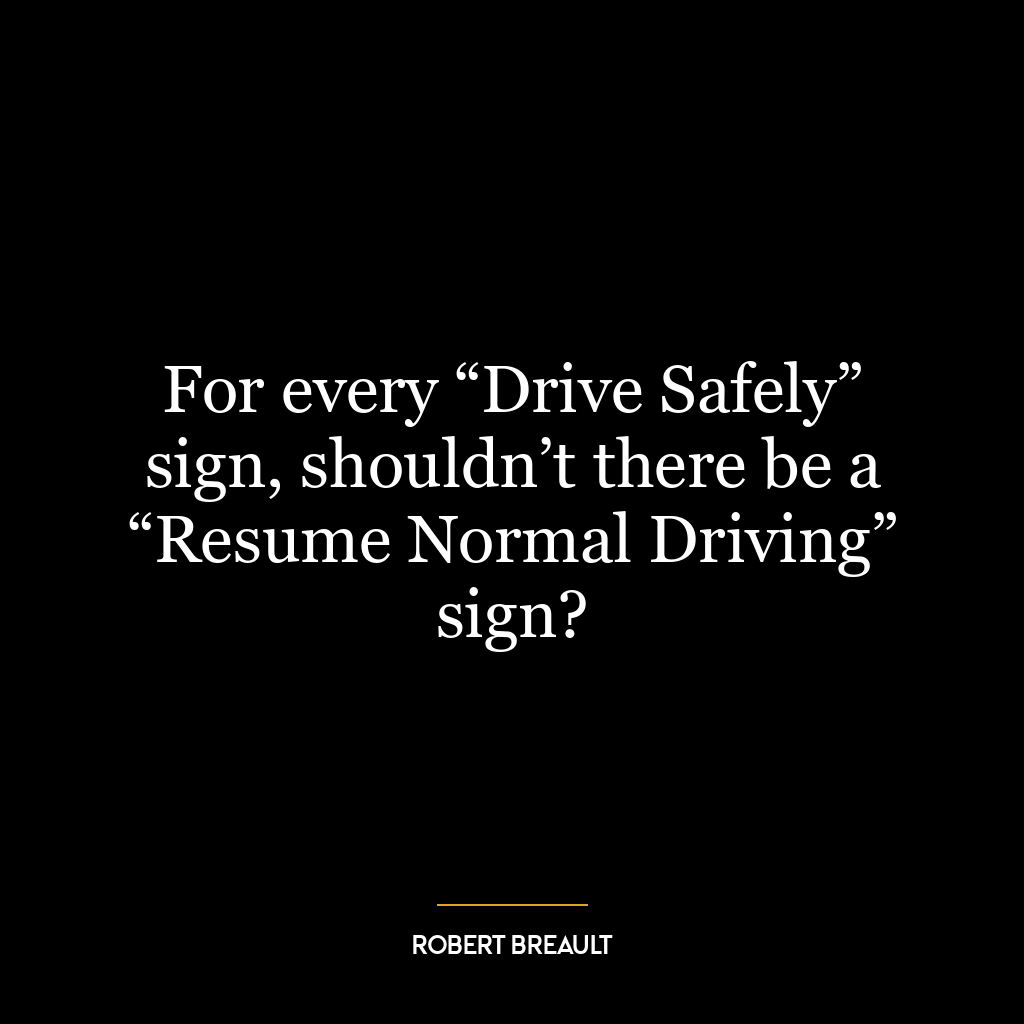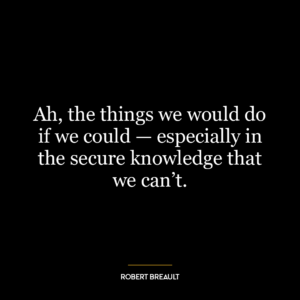For every “Drive Safely” sign, shouldn’t there be a “Resume Normal Driving” sign?
This quote is a humorous take on the concept of safety and normalcy in driving, but it also has deeper implications about human behavior and our response to rules. Essentially, it underscores how we often need reminders to act responsibly or safely. However, once the perceived threat or reminder is removed, we tend to revert back to our usual behaviors – hence the idea of a “Resume Normal Driving” sign.
The “Drive Safely” sign symbolizes external prompts that direct us towards responsible actions. These are necessary because despite knowing what’s right or safe, people often choose convenience or speed over safety. The hypothetical “resume Normal Driving” sign humorously points out that without constant reminders, individuals might return to their less careful ways.Applying this idea beyond driving,it suggests that people might need constant reminders or structures in place not just for unusual situations (like dangerous roads),but also for maintaining standard good practices in everyday life. In personal progress terms, this could mean setting up regular prompts for ourselves – such as alarms for taking breaks from work, notes reminding us of our goals etc.
In today’s world where distractions are abundant and attention spans are shortening due to technology overload, this concept is even more relevant.it emphasizes the importance of creating systems and habits rather than relying on willpower alone.
From a societal viewpoint too - whether it’s about following COVID-19 precautions like mask-wearing and social distancing; adhering to environmental norms like recycling; or practicing ethical behaviors – continuous reinforcement seems essential because when left unsupervised or unreminded people often tend toward complacency.
Thus while Breault’s quote may seem light-hearted at first glance; upon deeper reflection it offers profound insights into human behavior – underscoring how we may need constant nudges not just during extraordinary circumstances but also for maintaining ‘normal’ good practices.















